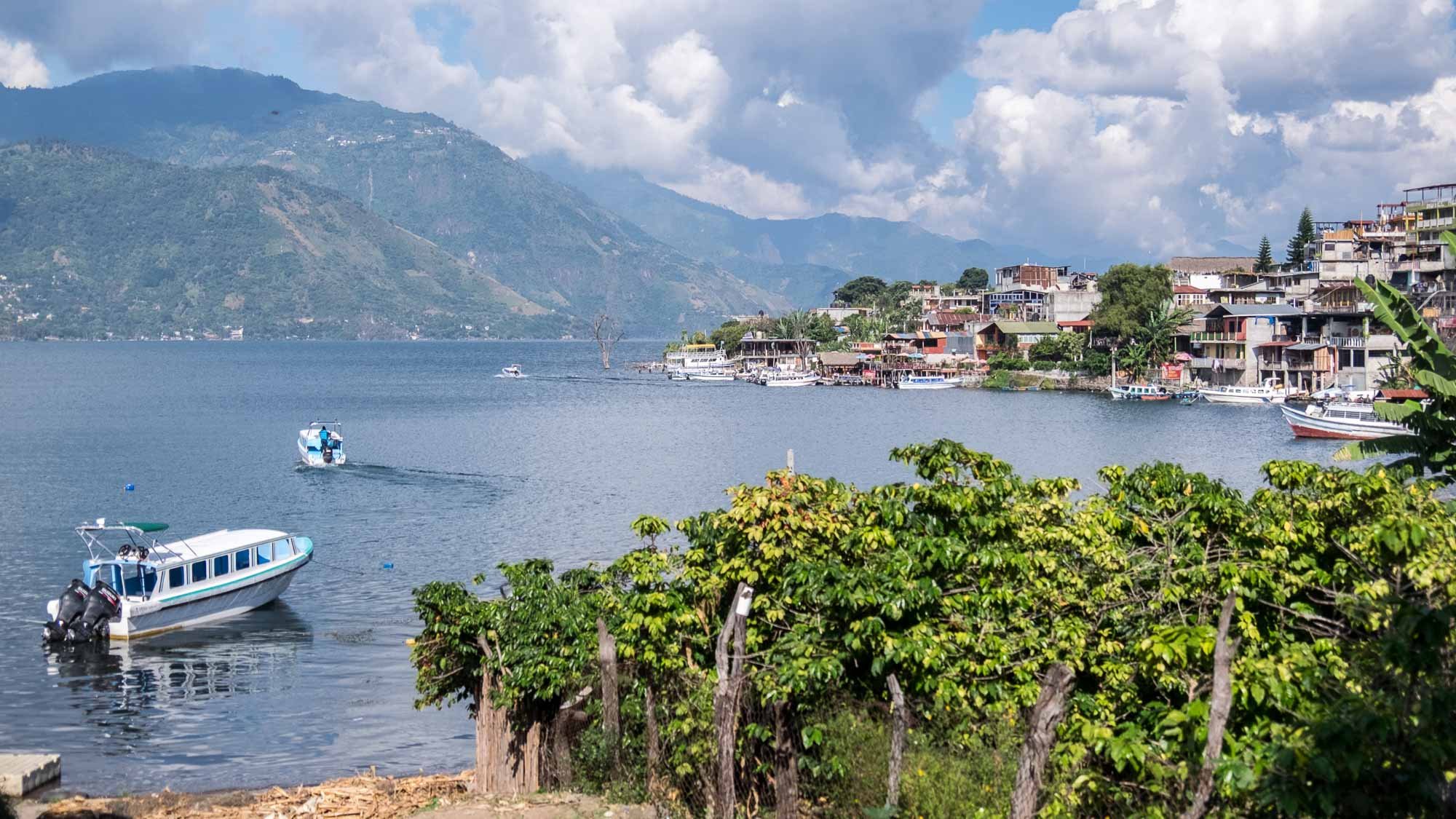
Introduction: A Shaky Welcome to San Pedro
The shuttle from the airport drops us off at the Panajachel dock after dark. We board the last lancha alongside dozens of locals after a long day of work - or, in the case of the teenagers at the front, a long evening of drinking.
The boat scuds over the inky water on its rounds to each of the villages scattered around the lake.
Picture this, but nighttime and really crowded:
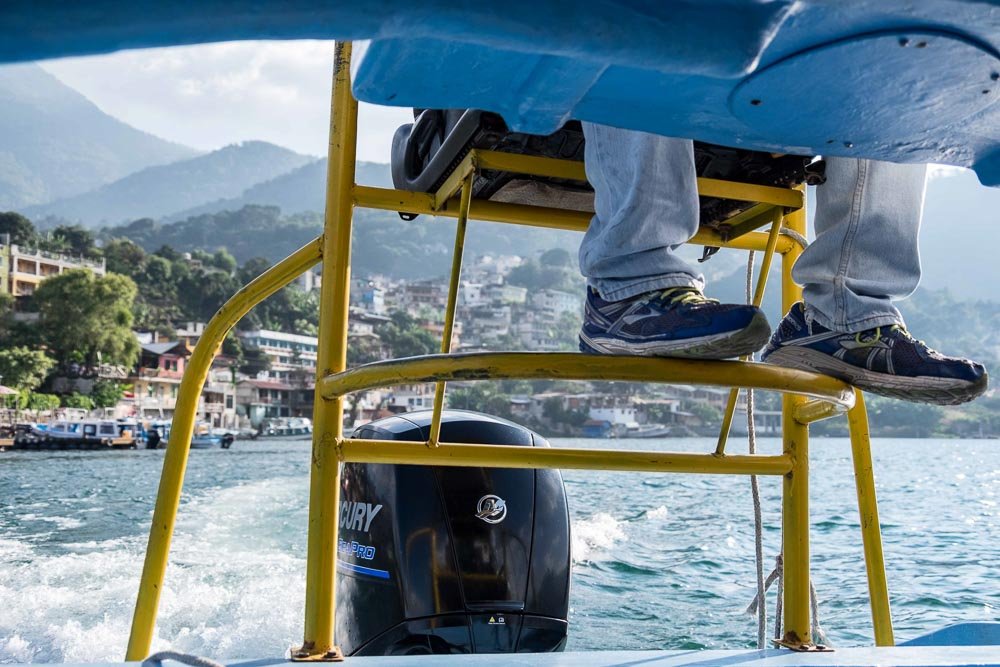
“Dedshgigtaehjkl?”, the guy in front of us slurs, dropping another depleted Miller Ice to the floor of the boat. He may have been asking us where we were from, or perhaps where we were going. I can’t even tell if he’s speaking Spanish.
Fortunately, Nash is fluent in the language of drunks. He soothes the stranger with an exchange of silly noises. Appeased, the boy falls silent and resumes drinking his beers. Several more towns pass by in a twinkle of lights.
The relative peace makes it all the more startling when the drunkard rears back and punches his friend in the face.
The air on the boat congeals as everyone holds their breath and averts their eyes. The forced casualness appears to work - the boys whisper together for a bit then fall into a sullen silence until they disembark. Our shoulders relax as we watch them totter away down the dock and just barely manage to avoid falling in the water.
Meanwhile, at each stop, Nash has been nudging his neighbor and asks what town we’re at. Finally, he gets the answer we’re looking for - “San Pedro."
After over 24 hours since we left my parents’ house in California, we’ve finally made it.
We disembark, grab our bags off the roof, insist on the correct change from the lancha helper, and strike off blindly in the direction of our hotel for the night. It’s not long before we are lost in the maze of alleys that make up “Gringolandia”.
Picture this, but dark and empty:
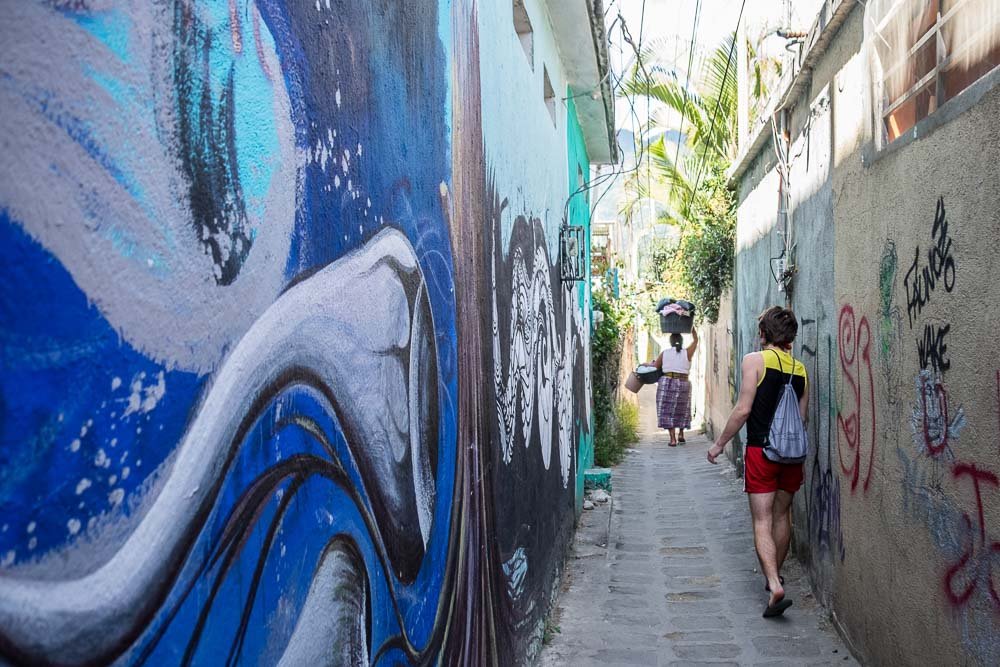
A boy on a bike stops to give us directions, referencing places like “Pinocchio” and “Wild Rover”. My rusted out Spanish can't keep up, but I nod anyway.
Minutes later, we stumble across the boy again. We're heading in a totally wrong direction! He laughs and leads the way, pedaling slowly.
I can’t help but notice that all of the places he mentioned are bars, but he also points out the best spots to swim and names each of the volcanos that blot out the stars.
So far my first impressions - from the drunk kid on the boat to the endless parade of lakeside bars and hostels - support San Pedro’s backpacker party reputation.
And I must admit, I'm not enthused about it.
You see, my boyfriend and I are in the middle of an experiment in living substance-free - meaning no drugs or alcohol (expect when our parents insist upon it).
So far we've managed to have a great time without feeling like we're missing out. But I'm worried that the only thing to do here is drink with other travelers.
However, over the next three weeks, as the tangled alleys resolve themselves into a familiar landscape, I learn with relief that there’s a lot more to San Pedro than just cheap alcohol.
And, by the way, San Pedro does have cheap alcohol in spades. The $1 beers and tequila sunrises can keep you fueled through thumping club music at Sublime, trivia nights hosted in English at Hostel Fe, and open-mic nights at Wild Rover.
But there are also plenty of activities that can be enjoyed by anyone, including a shy straight-edge like myself.
If you choose to do these without an alcoholic beverage in hand, you won’t be alone - a portion of the local population stays away from drugs and alcohol for religious reasons. The college student in our host family has never even tasted beer!
So, without further ado, here are some of our favorite activities:
1. Eat your heart out
The touristy sprawl along the lakeshore is like a different world from the rest of San Pedro. While I’m not sure how I feel about this segregation, I have to admit that the variety of restaurants to soothe foreign palettes is impressive. We also found no shortage of vegetarian options.
While the prices are high for the area, a meal with drinks usually came out to $7 for the two of us - a fraction of what the same quality would have cost at home.
Maybe we hit the shoulder season or came at unusual times, but we usually had the restaurants to ourselves. At most, one other party would come and go while we hung out, sipped our sodas, and took advantage of the free Wifi.
This is a list of every place we went to, ordered loosely by preference.
BIG BURGER
This was the first restaurant tried, since it was inexplicably open late at night on our arrival. We walked through an open door under a burger sign and up several flights of stairs to find it.
Even though the food is pretty standard, for some reason the place captured our hearts. The owner is chill and friendly and the fourth-floor view lets you both see the lake and spy on people in their homes at the same time.
While we can’t speak for the burger in their name, Nash is obsessed with their burrito. And their French toast comes with a side of ice cream!
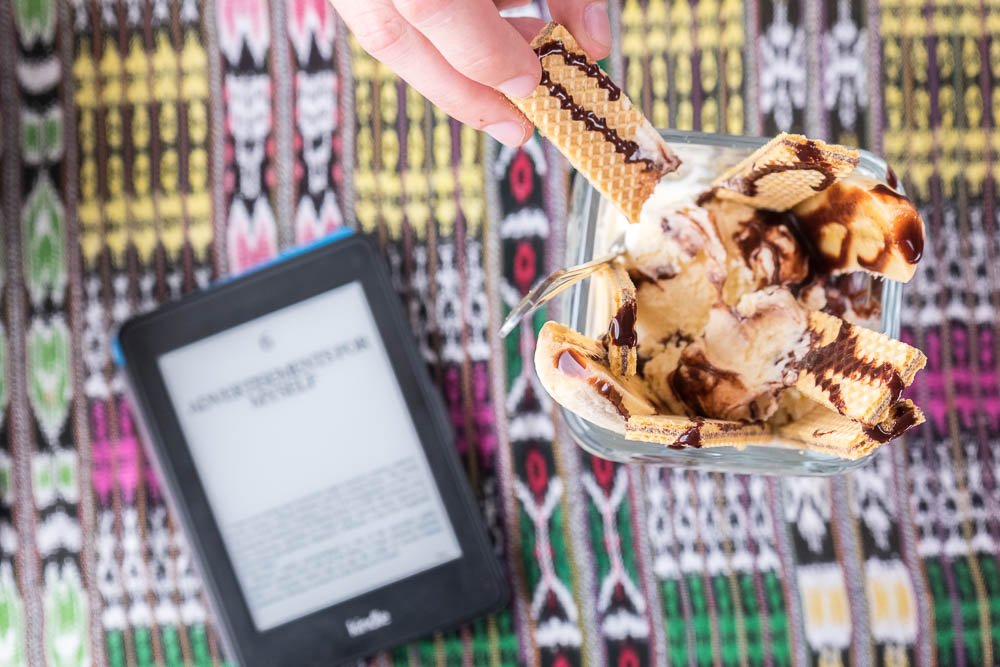
-
Yakitori de Cava
On Tuesday through Saturday, Cava hangs a Japanese flag outside of his food stand to signal he’s open for business. He’s a super friendly guy from Japan who plays the Brazilian ukulele (the cavaquinho from which he takes his name) and sings in a mellow three-piece Brazilian band.
Cava grilled our vegetable yakitori on the coals in front of us and served it with tea and a delicious bowl of vegetarian oyakodon.
There’s only one table, so you may have to wait your turn, but it’s worth it!
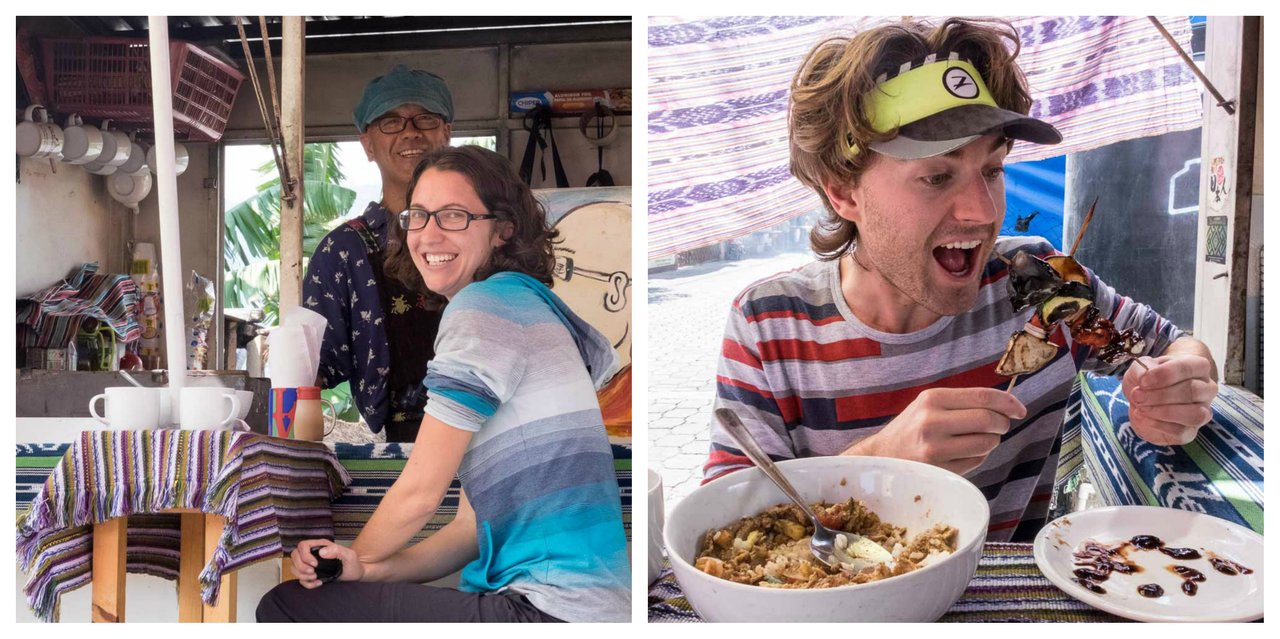
-
Fifth Dimension
We went to this vegetarian haven for a Thanksgiving feast that didn’t disappoint. The Spicy Tandoori tempeh pizza was our most flavorful meal in San Pedro, and we followed it with actual apple pie! (Because I couldn't spend Thanksgiving without pie.)
Boasting the fastest internet in town, it was also a great place to video chat with my family. The ex-pat owner, Peter, was very welcoming, even though we were probably really awkward because we hadn’t spoken to anyone else in English in over a week.
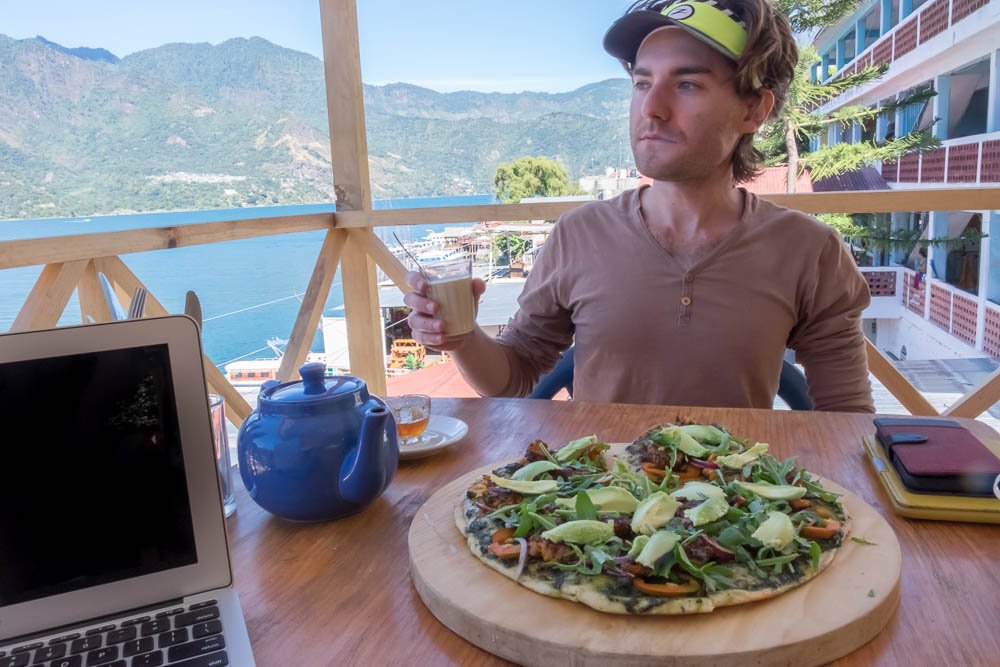
-
Jarachik/Cafe Atitlan
The sign above the gate reads Jarachik, the name of the adjoining hostel, but we heard it called Cafe Atitlan more than once.
Our third and final time here was with our host family and teachers as a thank you meal. They chose the location themselves, probably because it’s locally owned and offers up a huge variety of food, including many meat-centric dishes.
I recommend their lemonade, which comes blended in an enormous goblet. The food portions are equally giant, and we left stuffed to the gills after paying 400 quetzales (~$53) for 8 people.
My only complaint is that they tend to pump reggaeton music out of the speakers, which ruins the peaceful garden vibe.
-
Street Food
I have to give a shout out to all the cheap and delicious street food. Snack stands pop up during typical break times around 10am and 4pm. The most popular are tostadas, which you can pile high with your choice of toppings.
Chuchitos, small tamales wrapped in corn husks, are also common. My personal favorites are dobladas, which are stuffed tortillas similar to pupusas.
Finally, don’t miss the chocolate covered frozen fruits, which will usually put you back around 1 quetzal (13 cents)!
-
Idea Connection
This was the most crowded place we went to - we actually had to wait for a table in the garden during weekend brunch. While you eat, you can browse their selection of movies available to download or listen to their occasional live music (Cava’s band plays around noon on Mondays).
Run by Italians, the restaurant offers bakery items, sandwiches, and pasta. Their pan au chocolate was delicious, and I hear the coffee is as well.
-
Clover
This has more of an outdoor bar-like atmosphere, and the original Irish owner was supposedly run out by the new owners, but I have to put it on here for two reasons: Chocobombas and Superpanqueues. The former is a giant chocolatey milkshake and the latter is a giant pancake heaped with fruits and yogurt.
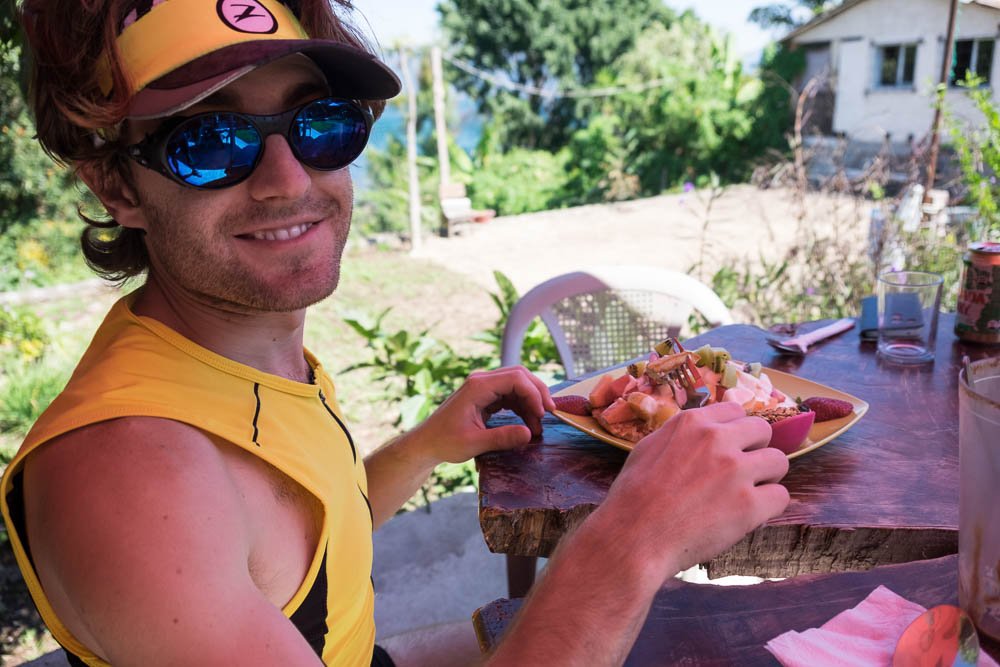
-
Restaurante Tin Tin
You’re welcomed into Restaurante Tin Tin by a cutout of the classic boy and his dog. The theme continues a little way into the restaurant, with comic strips on the menu and Tin Tin murals on the walls, but from there the decor gets... a bit more eclectic. There are inspirational slogans in broken English, a tv playing telenovelas next to a Catholic shrine, and a giant banner of a burger in the back.
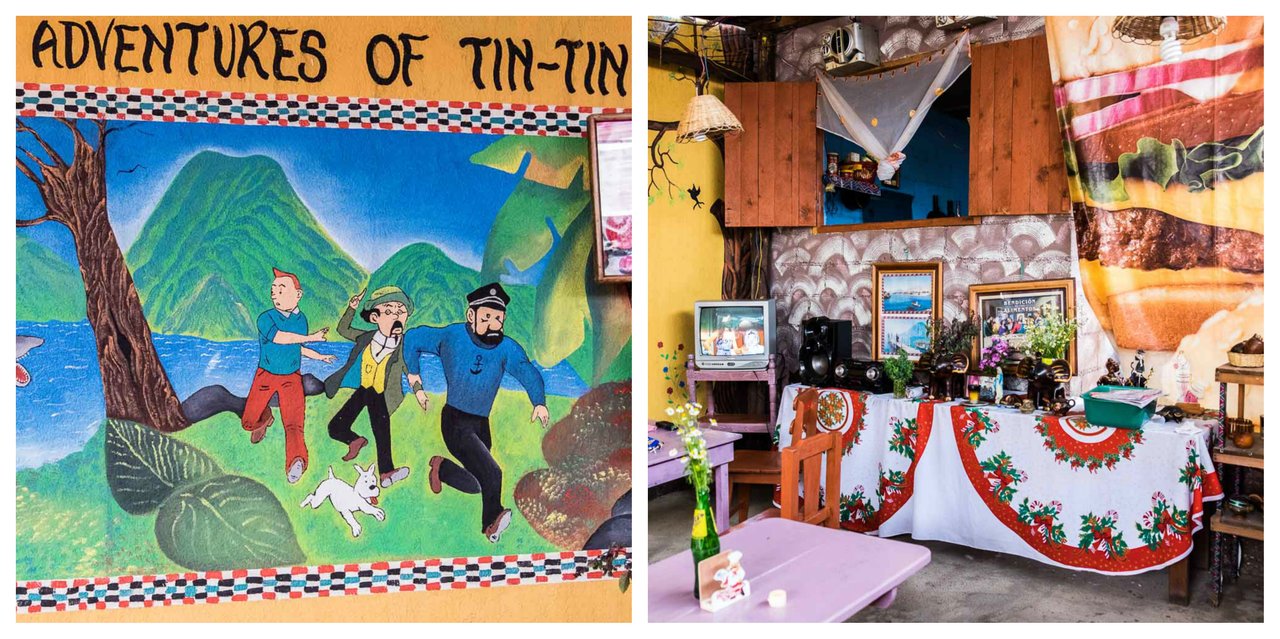
The menu is equally quirky. We try Guatemala’s take on Indian food, complete with samosas made from slices of toast pressed together around the edges. They're like a creative version of Smuckers Uncrustables. While the food isn’t great, I have to give this place bonus points for a weird experience.
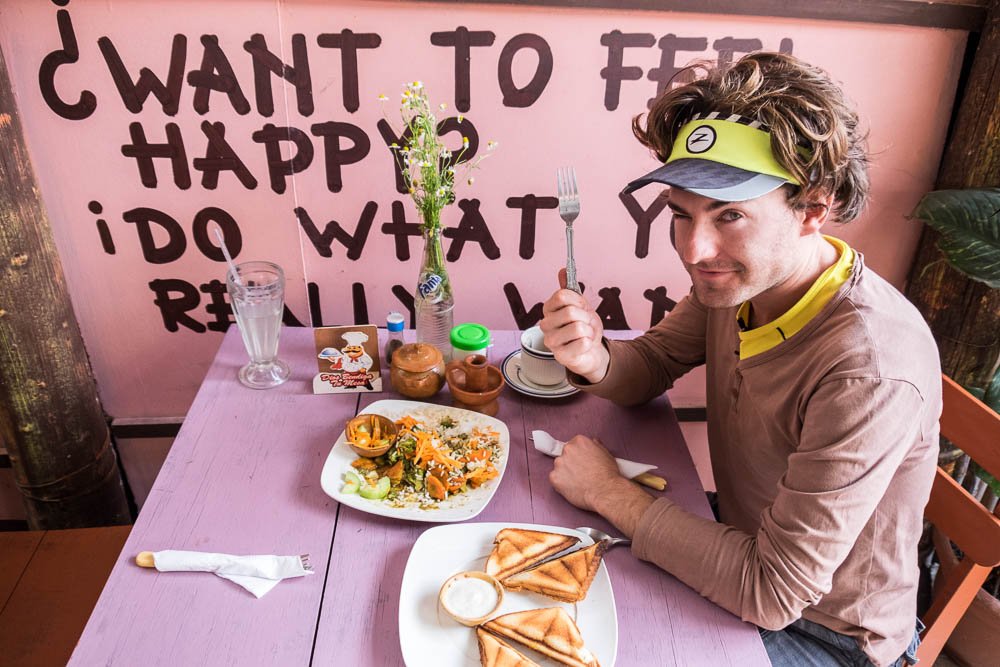
-
Blue Parrot
This is THE expat hangout spot and probably the best place in town to chat in English over a burger. The owner spends summers running state fairs in America and winters in San Pedro, where he’s also host to Smokin Joe’s all-you-can-eat BBQ every Sunday. We were there to try the grilled cheese followed by a slice of pecan pie… Mmm, simple comfort food.
-
Shanti Shanti
There are a lot of places that offer falafel along the lake, and we heard that Shanti Shanti is the best. The restaurant has two locations along the main tourist drag, both with peaceful hippie-like ambiances. The falafel was good, but ultimately not very memorable.
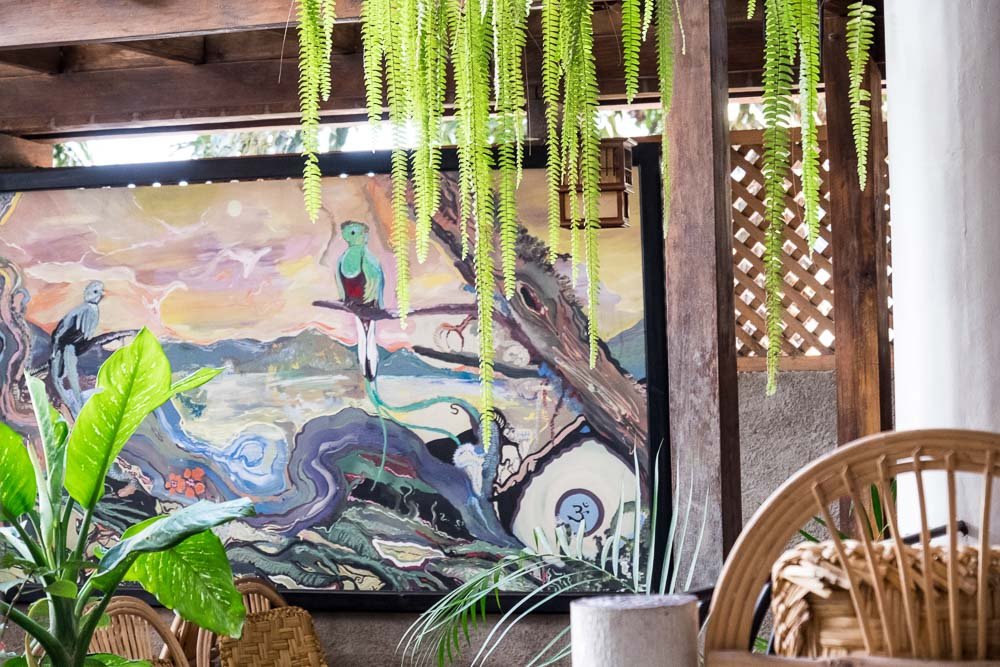
-
Mike’s Pizza
For a classic wood-fire pizza, head to the top floor of Mikaso hotel, where it feels like you’re floating in a glass box above the lake.
But for the local pizza experience, try one of the three Mike’s Pizza locations scattered around the central park. The pizza was not your typical style, and I enjoyed sampling different sauces on top of my slices.
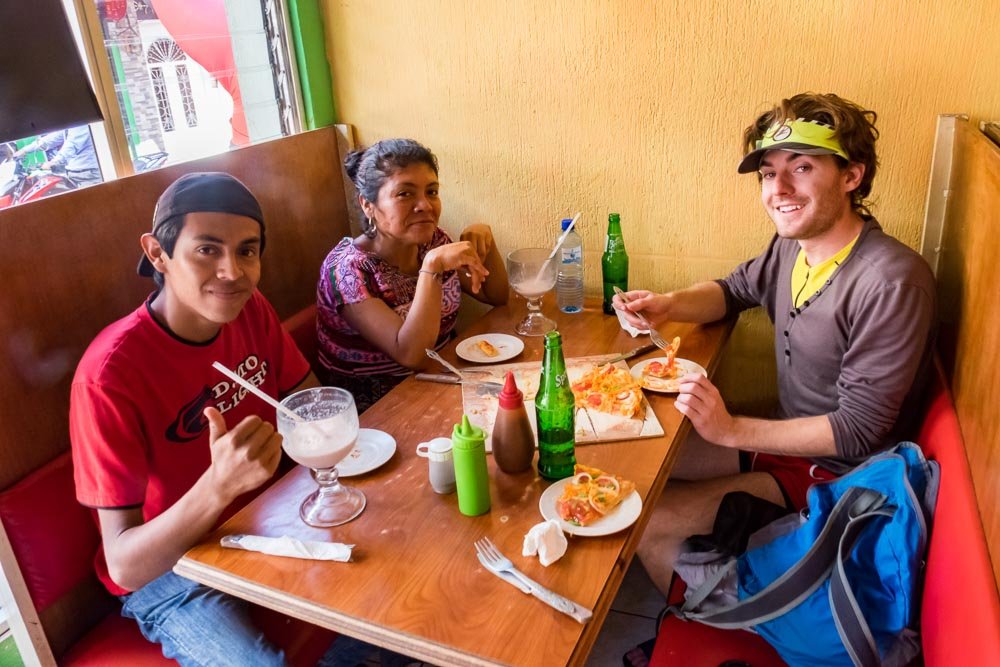
-
Cookie from a Banana Bread Lady
In San Pedro, you will soon encounter women who sit on the side of the road on the tourist paths and occasionally walk into restaurants intoning “Pan de banana. Pan de chocolate.”
Well, in a moment of sugar-crazed weakness, I bought an overpriced cookie from one of them.
And all I can say is no. Just no. It was the worst cookie I’ve ever tasted. Overcooked, dry, tasteless... I can only hope her banana bread is better, since I haven't had a bad slice of banana bread in Guatemala!
2. Take a hike
We didn’t hike the San Pedro Volcano - instead, we opted for a shorter climb to the Indian's Nose (La Nariz del Indio), the highest point on a distinctive ridgeline that's shaped like a face. You can technically start this hike in San Pedro, but the laziest way is to leave town and take the chicken bus to Santa Clara.
As you can see, the lighting is pretty harsh in these photos. The most popular way to do this hike is before dawn to catch the sunrise (buses start running at 4am and leave from the park, and you will need to pay a 50Q entrance fee).
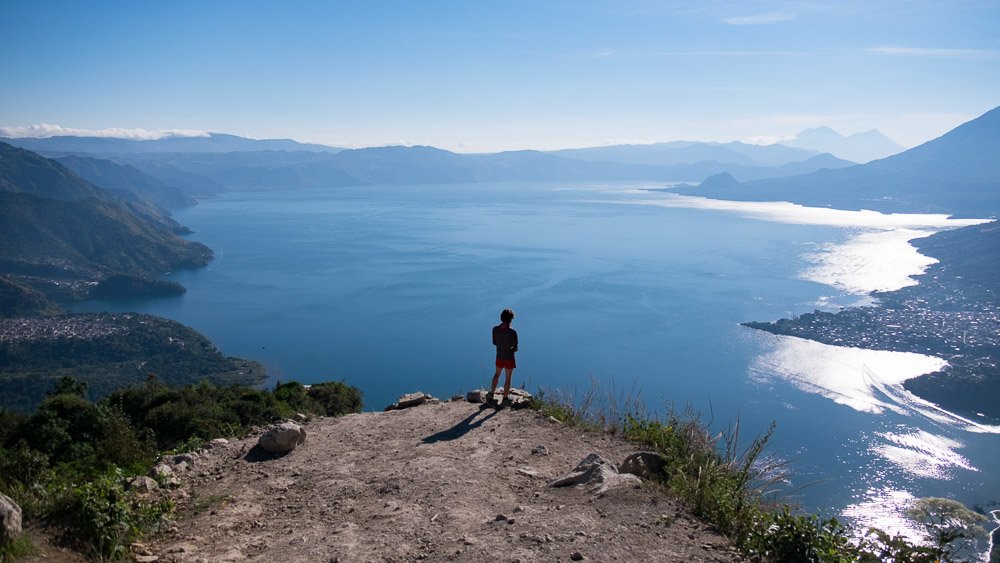
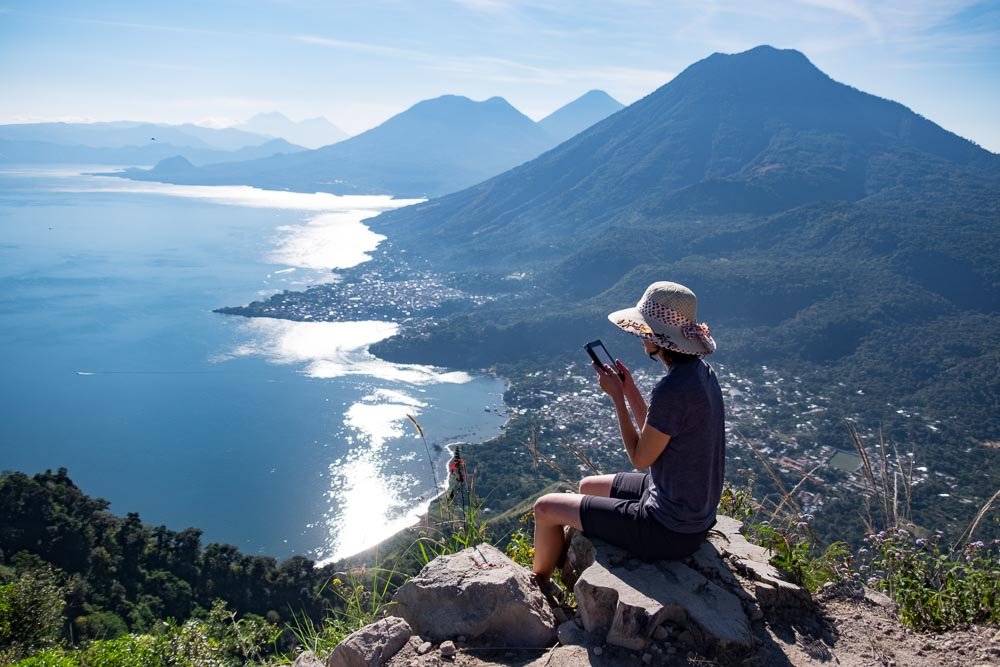
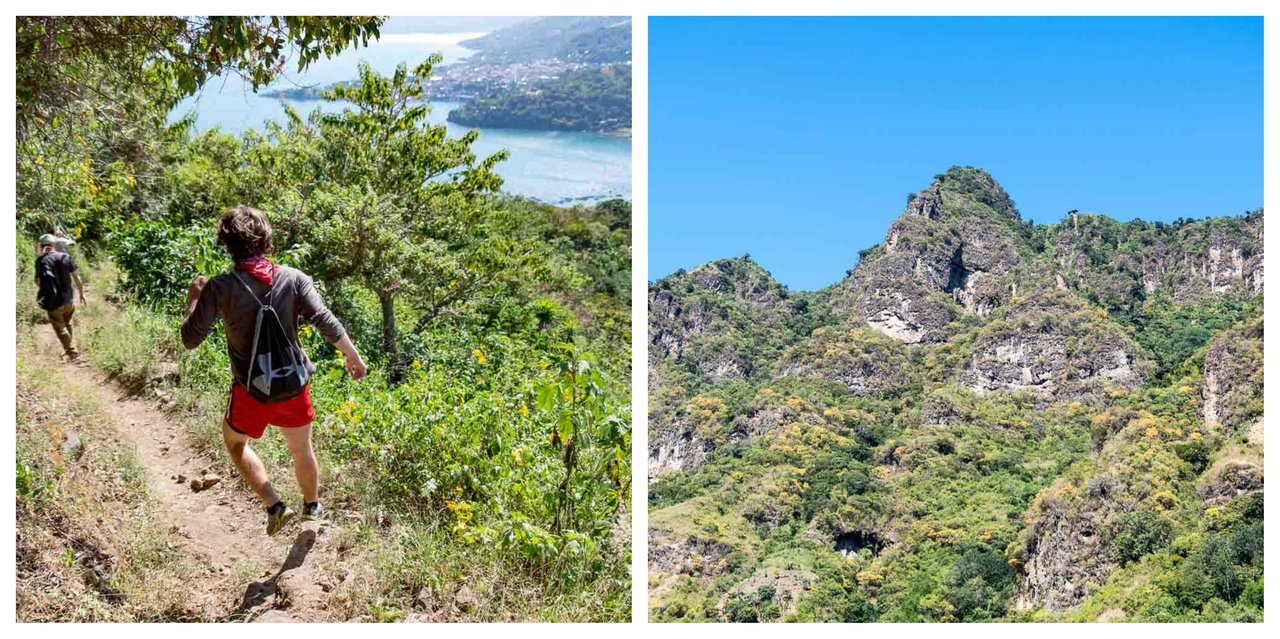
From the top, we walked all the way to the bottom, slipping and sliding over some of the steeper parts, and strolled through San Juan on the way back to San Pedro.
3. Enjoy the water
Unless you live here full time, it’s not every day you’re on the shores of a deep blue lake surrounded by volcanos.
The Guatemalan government has taken huge measures to clean up the lake, so it’s not as polluted as it once was (if that’s any consolation). Just keep your mouth closed, and the swimming is great!
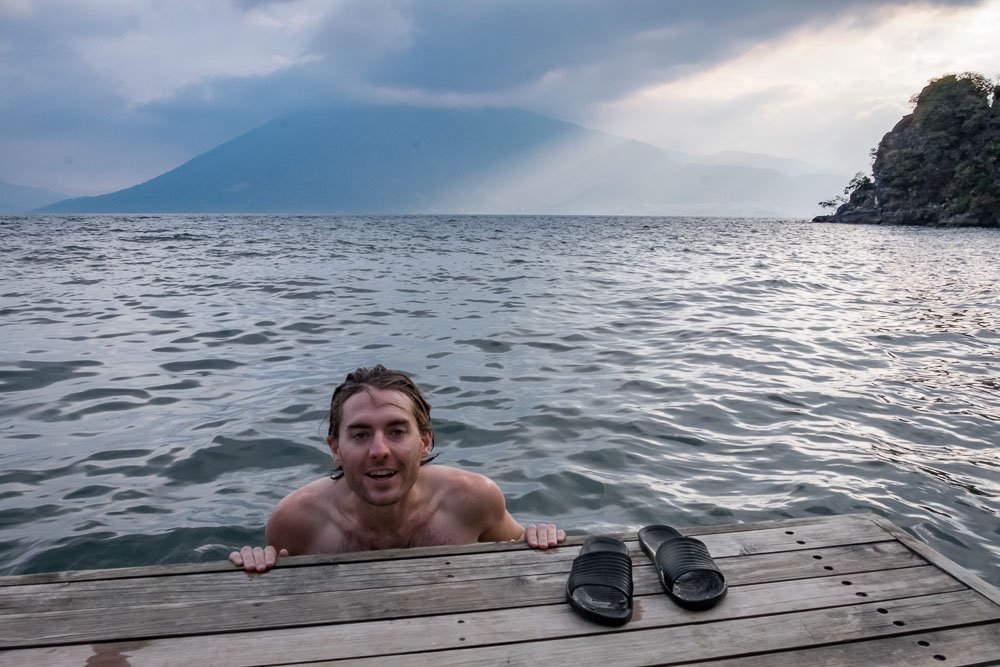
From the dock facing the town, take a left and follow the road all the way to the dirt path past its end, which leads to “Las Rocas”, a favorite swimming spot with some rocks and even a tree to jump off of.
Or, if you’d rather avoid getting wet you can wait for a morning when the wind is calm and rent a kayak from any of a number of spots along the shore.
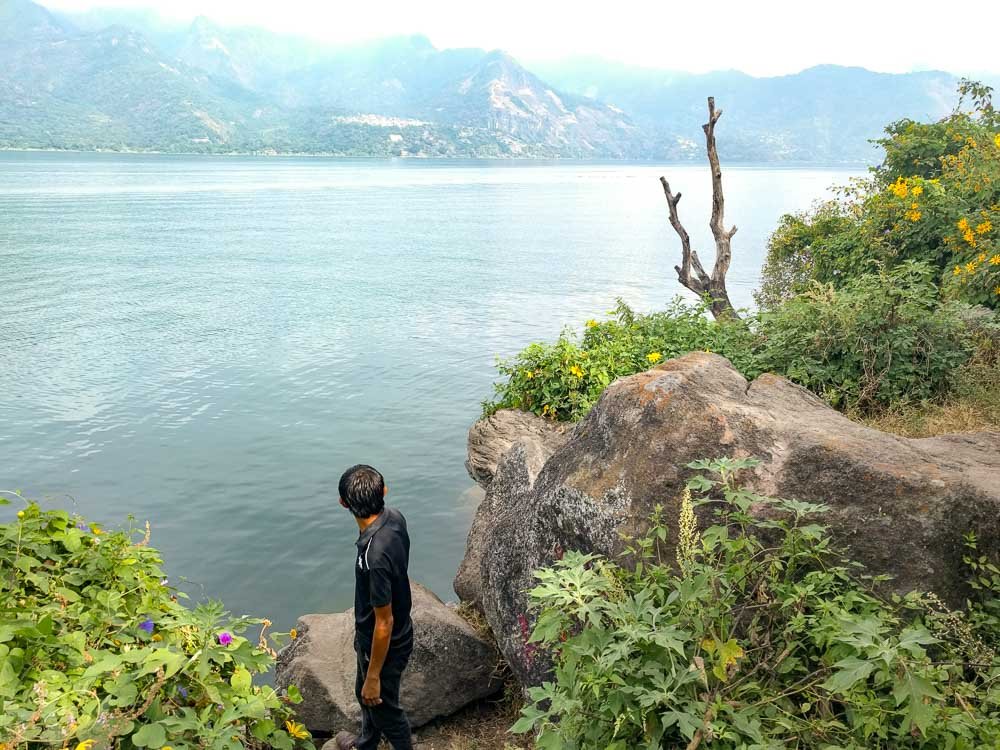
4. Catch an amateur sports game
-
Soccer
We first spotted San Pedro’s football field from above, up on the Indian's Nose. We asked our host family about it and used a satellite image to guide us there, an uphill stroll from the town center.
The stadium includes an impressive artificial turf field with tons of seating and snacks sold at the entrance.
Typically, kids play in the morning and adults play in the afternoon, but when we were there at 2pm on a Saturday the youth teams were still playing. It made for some amusing spectating.
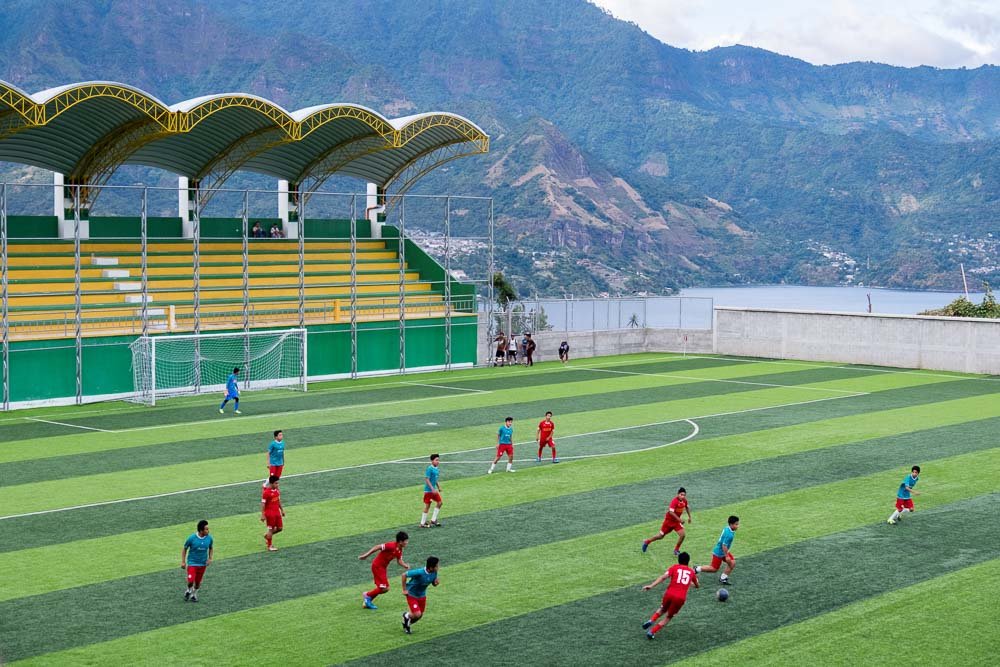
-
Basketball
It’s no revelation that at the center of every town around Lake Atitlán you will find a church. More surprising, perhaps, is what you will inevitably find next to it: a basketball court.
Guatemalans are not known for being the tallest nationality, with an average height of around five feet, but it works out when everyone's on an equal playing field.
San Pedro's basketball court is in the middle of the market next to the park. Throughout November and December, it hosts a tournament to determine the best basketball team in San Pedro. The nightly games draw large crowds from around 8:30pm to midnight.
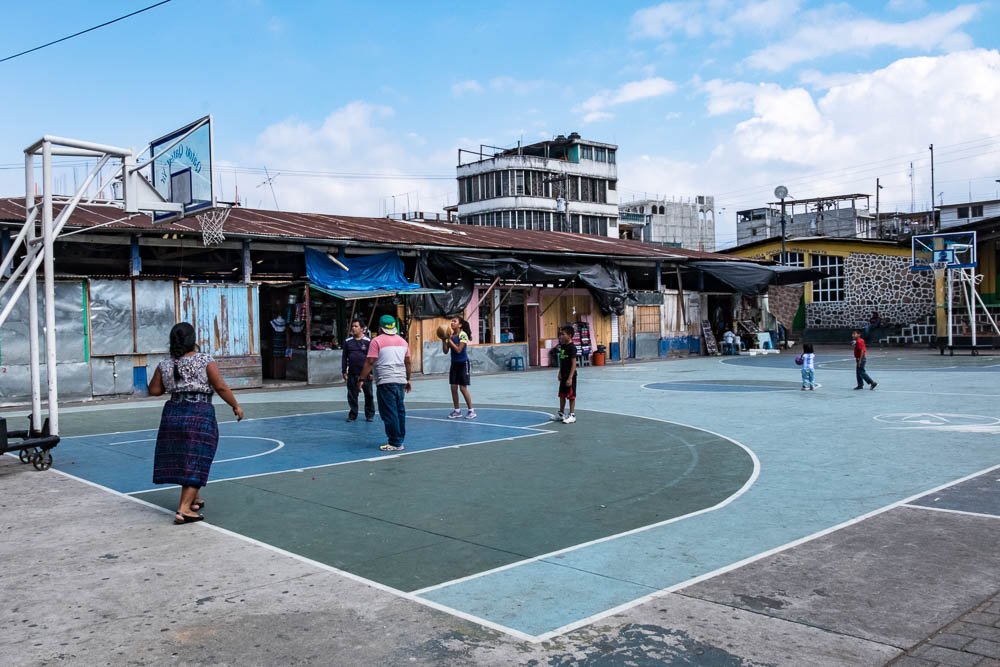
5. Tour a local co-operative
I’m a big fan of small cooperatives that encourage accountability and share profits among its members. Our Spanish school, which itself has five joint owners, offered tours of other local co-ops so we could gain an understanding of how they work.
-
Weaving
Lake Atitlan Women's Weavers Cooperatives is exactly what it sounds like - a group of women who work to preserve the art of traditional textiles.
We take part in a demonstration that details each step of the painstaking process: cleaning cotton, spinning thread, extracting dyes from various natural ingredients, winding a warp, and finally weaving it all together on a backstrap loom.
The more complex pieces can take up to a month of an individual’s life to create and sell for around $45.
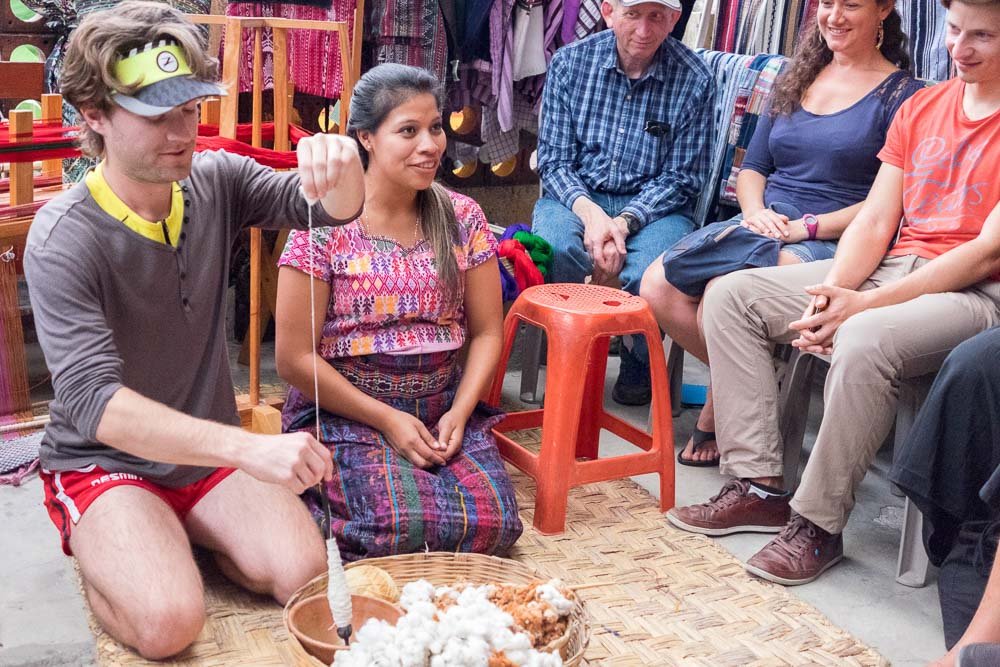
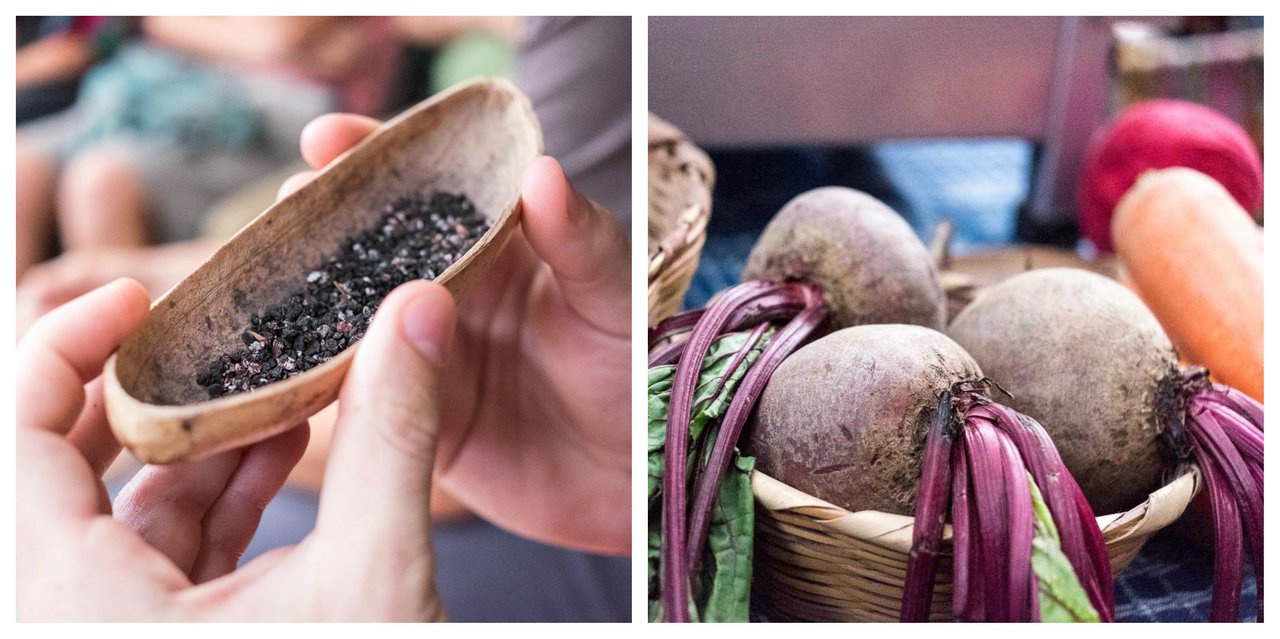
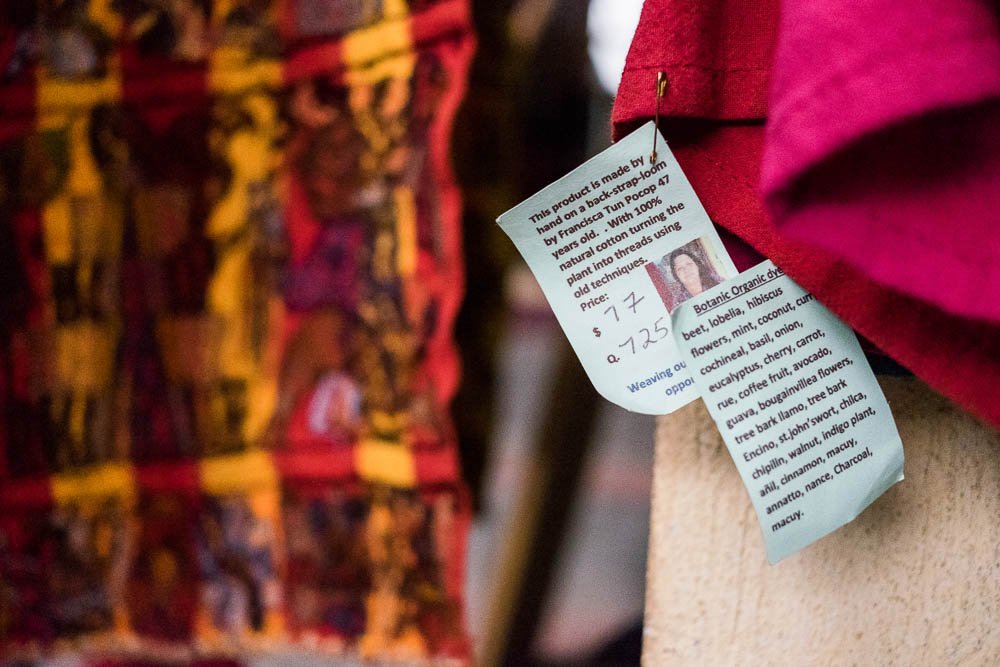
-
Coffee
Lake Atitlan has the right climate, altitude, and volcanic soil to produce the highest class of coffee in the world, known as SHB, or Strictly Hard Bean.
Adenisa handles the processing of beans grown by over a hundred families in three towns. Approximately sixty families are members of the cooperative, since they’ve undergone the three-year process of becoming certified organic. This includes my Spanish teacher’s dad, who owns organic coffee plants scattered around San Pedro.
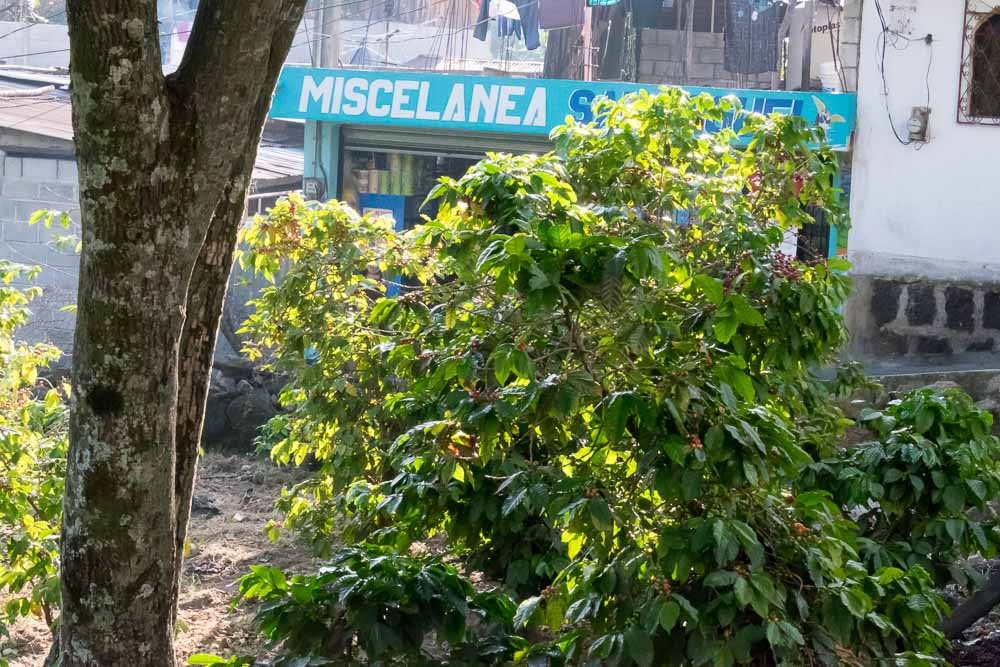
We miss the start of coffee season by three days, so we don't get to listen to the machines stripping off shells or watch the beans drying in the sun. However, we do get to see worms at work turning the discarded shells into fertilizer for next year’s crop.
We also taste the “honey water” of a ripe, red coffee bean straight off the plant.
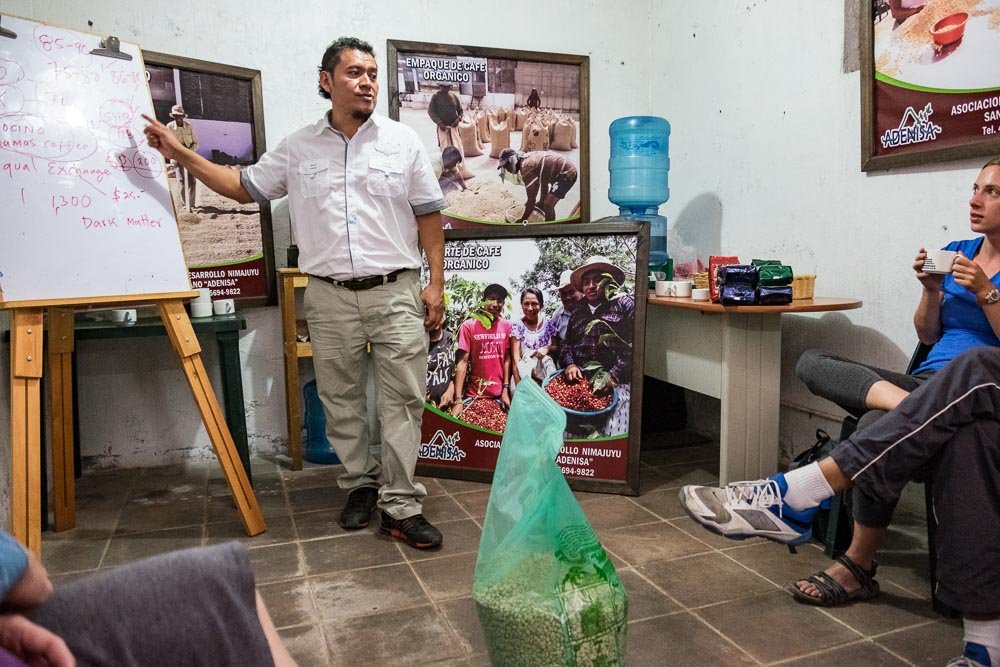
SHB coffee is so expensive that those who grow it can’t drink the results. Instead, sacks of unroasted beans are exported to Europe and the United States.
We have the privilege of sampling some of the coffee roasted on site. My mouth normally twists at its bitter taste, but this cup was non-acidic, full-bodied, and jam-packed with caffeine.
6. Study Spanish
The main reason for most tourists to visit San Pedro - including ours - is to take advantage of some of the cheapest one-on-one Spanish lessons in the world.
Since most of the teachers around the lake learned Spanish as their second language, it might not be the best place to seek mastery. However, people tend to speak more clearly and slowly and understand the process involved in learning the language, which is a huge advantage for beginner and intermediate students.

Most schools offer homestays and include after-school activities like lectures on Guatemalan culture and history, Spanish movies, salsa lessons, and weekend tours at a reduced price. Many also support local non-profits with a portion of your tuition and may help set you up with volunteer opportunities.
There are a staggering number of choices, but Casa Rosario, San Pedro Spanish School, and Cooperativa seem to be among the most established and all come highly reviewed.
Reservations are not recommended unless you're visiting during the dry season (Dec and Jan) and want to ensure a homestay and/or morning classes, since they require a steep non-refundable deposit (except, it seems, at Casa Rosario, which seems like a top budget pick).
Prices depend on the number of hours of classes per day and your lodging. The most common selection of four hours per day runs from about $70 to $140 a week. Homestays that provide your lodging and three meals a day (minus Sundays) cost around $70 to $100 week.
That's right, you can get 20 hours of private Spanish lessons and seven days of full room and board for $140 USD!
I wrote up an entire post about my time at Cooperative Spanish School if you're interested! It was a life-changing experience.
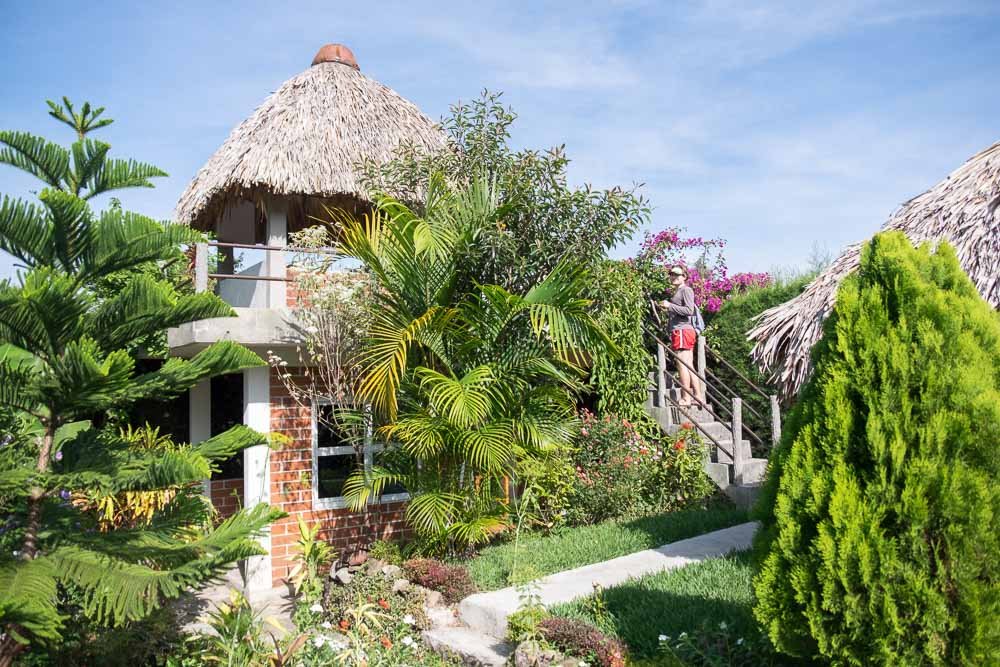
7. Visit other villages!
We were so smitten with San Pedro that we spent half our time in Guatemala there, but there are a dozen other villages only a water taxi ride away.
Each village has its own energy, culture, and even style of dress.
You can hop between yoga classes in hippie-filled San Marcos to a scenic walk along the cliffs from Jaibalito to Santa Cruz and be back by nightfall.
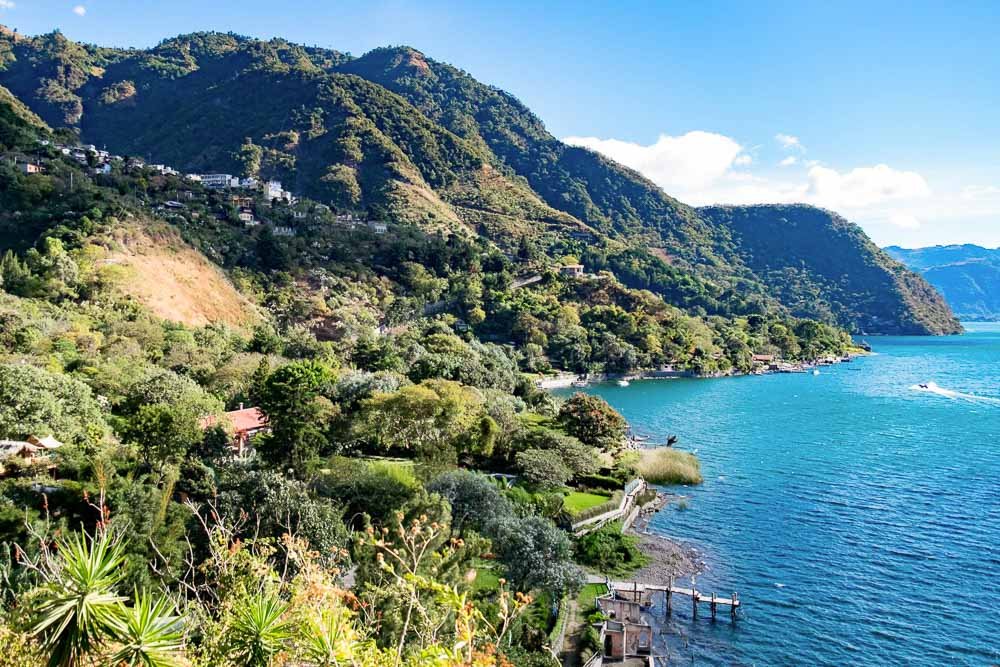
In the end, I needn't have worried about San Pedro's "party town" reputation. It's a festive place, full of wild hostels and locals who love any excuse to celebrate and set off fireworks, but we found many opportunities to relax.
At no point did we feel pressured to resort to the type of fun that may result in a punch to the face... and that's a win in my book!
Thanks for reading, and I hope this will give you some inspiration if you're ever in the area (regardless of your alcohol preferences 😉). All words and photos are mine (and my boyfriend is the lovely model in most of them) and I cross-published on my blog.
